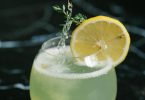Drinks industry’s innovation & enterprise
Innovation and Entrepreneurship in the Drinks Industry surveyed some 660 publicans to find that 41% had enhanced their food offering while 70% made use of social media for marketing purposes and 46% had developed an increased role for functions and special events.
The new report’s objective is to provide a profile, overview and summary of innovation and entrepreneurship in the Irish drinks industry.
At the time of going to press, according to the DIGI Chair and Chief Executive of Heineken Ireland Maggie Timoney, consumers “are prepared to pay a premium for quality. Irish breweries, distilleries and cider producers have responded in kind, experimenting with new product lines and new recipes. This has paid off”.
Eye to exports
The report points out that, “One major Irish off-licence operator lists 61 Irish IPA beers, 14 Irish lagers, 36 Irish pale ales and 65 Irish whiskeys in its product range.”
Some 72 production breweries employed 516 persons in 2017, “an average of 7.2 persons per brewery. Based on a survey of 46 microbreweries, 24% employed one to two persons, 22% employed three or four persons, 21% employed five or six persons, 15% of microbreweries employed seven to nine persons and 18% employed 10 or more persons. Only 5.9% of microbreweries employed 10 or more persons in 2015,” the report points out.
According to Bord Bia, 78% of production in 2016 was for the domestic market and 22% for export, with four breweries accounting for 69% of all exports.
The drinks industry is a long-established sector, with some companies and establishments existing for hundreds of years. As a result, the industry is often perceived to be a “traditional non-innovative sector” according to the report.
But the report’s author DCU Business School Economist Anthony Foley also highlights the wide geographical spread to the new drinks ventures with very few of them located in Dublin.
Import substitution
The report also highlights the growth in imported product over the years.
“Between 2003 and 2016 the imported share of domestic consumption has increased as follows:
* from 15.7% to 35.0% in beer
* from 43.8% to 64.3% in spirits
* from 9.2% to 14.3% in cider
“In addition, the share of domestic alcohol consumption accounted for by wine, which is all imported, increased from 17.9% to 27.6%.”
While the difference between the import price of wine and its final consumer price represents the associated transport, wholesale and retail distribution activities, this also represents additional economic output for the Irish economy, points out the report
Export growth
On the outgoing side, exports of beverages in 2017 were €1.497 billion compared with €1.197 billion in 2013.
“Whiskey is the dominant beverage export with 34% of the total, followed by liqueurs with 21%, beer with 20% and cider 4%,” states the report.
The growing number of alcohol producers is recognised by the fact that between 2009 and 2017 the number of licences for brewers, distillers and cider manufacturers increased from 32 to 137.
“The number of brewing licences increased from 22 to 86. The number of distilling licences increased from seven to 33 and the number of cider manufacturing licences increased from three to 18,” states the report.
Bord Bia’s 2017 report concludes that production craft breweries accounted for 2.3% of the production market in 2016 and about 3% of domestic consumption.
“The 2012 share of production was 0.4% and was 0.6% of domestic production consumed in Ireland,” it stated.
The report also refers to the growing international appreciation of Single Pot Still Irish Whiskey, noting alongside it the resurgence in demand for gin and the growth in Irish gin producers with more than 30 Irish brands now on the market.
The Irish Spirits Association has stated that the gin-producing sector has a target to treble exports to 400,000 9-litre cases by 2022 and to develop a ‘Gin Trail’ similar to the Whiskey Trail, with the main target export markets being the UK, Spain, Germany, USA and Canada.
The CSO Annual Services Inquiry reports a total of 6,522 pub enterprises in 2015 with an average size of 6.2 persons employed including both full- and part-timers. This represents an entrepreneur stock of over 6,000 persons.








